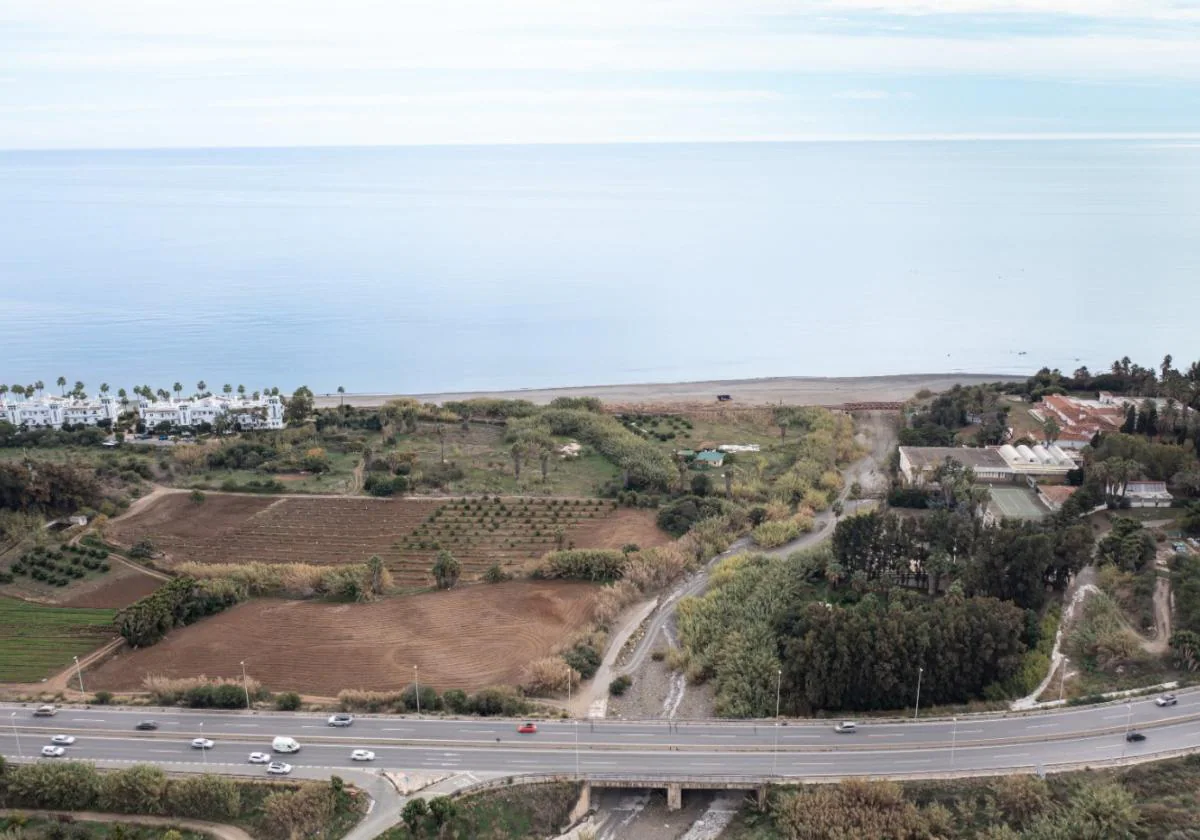Estepona's drought solution: a fast-build desalination plant by the sea
The town has the land, the plans and a funding scheme for a plant that could supply 20,000 cubic metres a day and take just four months to construct
Chus Heredia
Malaga
Friday, 24 November 2023, 16:33
Estepona is determined to face the drought situation head-on and get to work without depending too much on other authorities. The town hall already has the plans for a desalination plant by the sea. What is different about this scheme is that it is an 'express' installation in terms of the timeline and self-sufficiency when it comes to energy. Mayor José María García Urbano has also worked out how to pay for it. It will, however, rely on other authorities for permission to extract water from the sea and the pipeline that will be an outlet for the brine resulting from the desalination process. Prior consultations about these permits have been positive, however.
This will be a containerised desalination plant. According to Spanish firm SETA PHT, in these plants the machinery is installed inside containers. This reduces the costs and time of building works and the project can be developed in modules: put in operation in phases and extended.
The project in figures
-
20,000 cubic metres a day is how much water the plant could supply, extendable to 30,000.
-
53,442 square metres is the size of the site reserved by the town hall for the project.
-
5 MWh is the capacity of the solar panels that will power the desalination plant.
-
800 metres from the shore is the distance at which the water will be extracted. The outlet with diffuser for the brine will be 700 metres from the shore.
"The complete water treatment system is inside the container... What's more, these plants are totally automatic and the process can be monitored, the quality controlled and possible faults observed at all times," says the firm.
This cuts down the work needed although the necessary pipelines will have to be laid. In this case, the chosen site is close to the sea, at the mouth of the Castor river. The plot covers 53,442 square metres and is subject to a compulsory purchase order.
Drawn up by Hidralia
The plans have been drawn up by Hidralia, the firm responsible for the water supply in the town. The plant is designed to produce 20,000 cubic metres of water a day (two modules of 10,000), which could be extended to 30,000. If the project was set in motion for next summer it would be able to supply 10,000 cubic metres a day and connections would have to be made with the mains supply pipes, from El Castor to Padrón river.
The first connection would supply the town centre, while future links would be made to reach the rest of the municipality (such as Cancelada).
Related article
The Estepona solution
The polyethylene pipeline for extracting the water from the sea, has a diameter of 0.8 metres and would go one kilometre out to sea. The pipeline for the brine would be made of the same material and 0.63 metres in diameter. This waste outlet will reach 700 metres out to sea. To cover energy costs, solar panels will be installed, with a capacity to generate 4.5 or 5 megawatts per hour.

"The short term focus is on the water. We are aware [of the problem]. We want the town to be self-sufficient. If Estepona has a desalination plant it won't need to rely on Marbella's or the reservoir... We will free up resources for other municipalities," said the mayor, who said that the project would be worth exporting to other towns. "We could create a network of small desalination plants connected to the Acosol network. This could meet the needs of the coast and even inland municipalities," added the mayor.
The logic of the sun and sea
García Urbano's logic is unquestionable: the water resources from the sea are unlimited and Estepona has 330 days of sunshine a year. This makes him determined to complete this project: "It's a prefabricated, portable system, the works can be done in four months, aside from the environmental permits. We have the plans, we have the funding through the improvements quota, which we will prolong for another ten years and involves less than two euros extra on the monthly water bill," explained the mayor.
Garcia Urbano believes that it would not take long for the works to have paid for themselves, but in any case he talks of not just economic profitability but also social and environmental benefits.
With regard to the plant being financed by the town hall the mayor was categorical: "If in 10 or 12 years we have spent 150 million euros on transforming the town, we can perfectly well spend 20 or 25 to solve a vital problem. If we have to put off other investments for a year or two, people will understand."
García Urbano said that he has proposed the project to the Mancomunidad (a consortium of Western Costa del Sol municipalities) and that it was well-received.
"We want self-sufficiency, self-supply. And if there's any left over we'll share. We don't plan to sell," said the mayor, adding that the town hall was in a position to start the relevant procedures. "We've had the project since the last term of office," he said.
